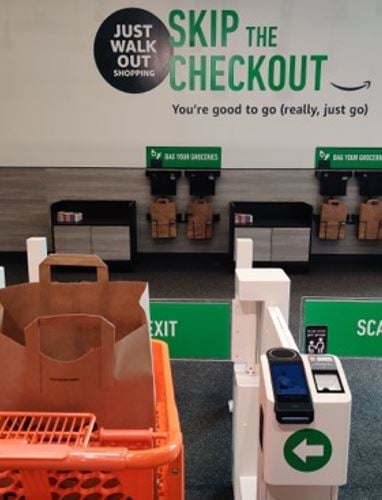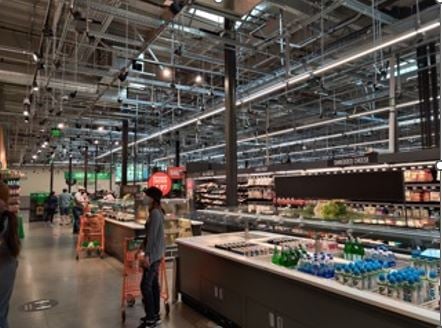In my two previous posts, I introduced the concept of Frictionless Organizations and how they are able to produce superior returns by removing unnecessary or unwanted processes and steps for their customers1. Frictionless Organizations essentially design and deliver their products and services so the customers never need to contact them for support or have to ask questions about their usage. On the other hand, organizations that wind up getting slammed by customer complaints and/or losing customers over time to competitors often have created friction along the way.
When my co-author and I conducted the year-long research that led to our new book2, we met with and researched companies based in Asia, the Americas, and Europe that strived to offer Frictionless experiences. We summarized how to become Frictionless using these 9 steps: Understand, Assign & Prioritize, Eliminate, Preempt, Digitize, Streamline, Leverage, Learn, and Redesign. Among the organizations that we feature are Airbnb, Amazon, Blizzard Entertainment, CableOne, N26, RedHat, Trek Bikes, T-Mobile USA, Uber, Vodafone, and Xero.
We are always on the lookout for more stories about Frictionless Organization, both good and bad ones, and I would encourage each of you to collect your own stories so that you can learn from them and apply the lessons to make your organizations operate in a Frictionless manner. In some cases, the companies we’ve already identified continue to excel and it’s worth digging into their new products or services are continuing their quest to be Frictionless.
How Amazon Fresh Removes Friction
A good example is the Amazon Fresh retail store. Many of you are probably unfamiliar with how Amazon Fresh works so here is a brief synopsis:
- By entering your Amazon.com stored credit card, your palm print, or your Amazon One code into a turnstile, you enter the retail store.
- Inside you will find all of the basic produce and nonperishables as well as prepared meals, pizza, bakery items, salad bar — both hot and cold — and milk products, soft drinks, and liquor options.
- You take down the product take a look at it and if it’s what you want, you put it in your bag or your sack that you can carry or wheel around in a cart. If you decide later that you don’t want that product, you can take it out put it back on the shelf.
- After completing all of your purchases, you exit another turnstile using the same three options and voila, you leave the store (see picture #1).

You don’t have to take your items out of your bag or cart to scan them and return them to your bag or cart, or wait for a clerk to scan them to tally the cost; instead, the cameras mounted in the ceiling of the Amazon Fresh store records all of your movements including taking products out of your bag and replacing them on the shelf so that you only get charged for what’s in your bag or cart (see picture #2).

Within minutes after leaving the store, your entire purchase is shown alongside other Amazon purchases in your online account, including the thumbnail photos of each item that you purchased in the store. If for some reason you don’t want that product after taking it home, you can click on that image and guess what? Amazon Fresh tells you to toss the item and it provides an immediate refund.
Clearly, this experience is far from a grocery shopping experience in that Amazon identified friction points including:
- having to unpack and re-pack your bags,
- search for an obscure label to scan the product,
- skipping all the lines, and
- returning any items.
There are now “29 Amazon Fresh supermarkets in six states — California (13 stores), Illinois (7), Washington (4), Virginia (2), Maryland (1) and Pennsylvania (1) — and Washington, D.C. (1), ranging from about 25,000 to 45,000 square feet”3. Originally called Amazon Go, the Amazon Fresh supermarkets leverage Amazon’s recent purchase of Whole Foods and this new RFID and camera technology, providing a seamless and Frictionless experience.
Alaska Airlines’ CEO Takes Ownership for Flight Cancellations
What other new Frictionless examples are there? A recent one that impressed me was the video message from Alaska Airlines’ CEO who took full responsibility (what we call “Ownership” in The Frictionless Organization) for his company’s flight cancellations due to problems with their pilot scheduling and pilot availability in general. The video has been very well received from Alaska Airlines’ frequent-flier customers, even those that have not experienced a flight cancellation. Alaska sent this email to its customers:
“A message from Ben Minicucci, Chief Executive Officer
Running a great operation is part of what makes Alaska Airlines who we are, but at the moment, we’re not living up to that commitment. I’m here to apologize for the impact and share how we’re getting back to being the airline you know and trust.
To hear why this happened and the actions we’re taking to make it right, please watch this two-minute video message.”
Take a look at his video below
So how about bad stories, cases where organizations are not able to provide Frictionless experiences? In our book, we did not profile any financial institutions as good stories or bad stories.
Bank CX Fail: Third Time Was NOT the Charm!
I recently had a particularly bad experience that could have gone a lot better had my bank paid attention to all the points of friction that it was causing for me.
The reason for my initial contact was because a wire transfer that I had set up for one of my subcontractors in France was rejected by his bank with no reason. I contacted my subcontractor who confirmed that the banking information was unchanged, which made sense since I had previously been successful wiring money to him for his company’s work. Luckily, he provided a second bank account for me to use so I attempted to enter that bank information into the online portal to enable me to do an automatic wire transfer and it was not working, either.
So what to do? I dug out one of the customer service numbers that I had used previously for my bank and after waiting on hold for a long period, finally spoke to someone who attempted to help me. She soon determined figured out that she was not skilled in this area, so she offered to transfer me to the online wire department, and of course I said “Sure.”
What I didn’t realize is that it was going to be a cold transfer without her conveying any information to the second customer service rep, so I had to repeat everything to him. He attempted to assist me on the phone but realized that it needed yet another expert at the bank, so he offered to transfer me to that person. At this point, I had spent about 45 minutes trying to get this question solved so I said, “OK, go ahead.”
Unfortunately, after yet another long wait and yet another cold transfer, the third customer service rep was still unable to help me. At least he seemed to understand what the problem was and said that the only way for me to resolve this was to walk into a branch office and ask a specialist to enter the wire information for the new bank and complete the transfer for me.
Now, like many of you, I haven’t been inside a bank branch for years! After all, that’s why I’ve been convinced by this bank to go online and to serve myself. Since my bank requires an appointment to go into the branch, two days later I went in and gave her all the information that I had attempted to do online and through my three phone calls, and after a short period of time she was able to enter the bank’s information and effect the transfer for me.
Great? No, not so great. She told me that she or one of her colleagues would be the only resource to be able to do this for me in the future and that for some reason, unknown to her and to others at the bank, I was not able to set this up for myself.
So many examples of being of not being frictionless!
What are your stories, good and bad?
Notes
1 “Is Being a Frictionless Organization Now an Essential Strategy?” https://customerthink.com/is-being-a-frictionless-organization-now-an-essential-strategy/ February 11, 2022 and “How to Galvanize a Business Around Customer Issues to Reduce Friction and Contact Volumes” https://customerthink.com/how-to-galvanize-a-business-around-customer-issues-to-reduce-friction-and-contact-volume/ April 6, 2022
2 Bill Price & David Jaffe’s forthcoming book The Frictionless Organization: Deliver Great Customer Experiences with Less Effort, Barrett-Kohler, Spring 2022.
3https://www.pocket-lint.com/gadgets/news/amazon/139650-what-is-amazon-go-where-is-it-and-how-does-it-work accessed 6 June 2022



